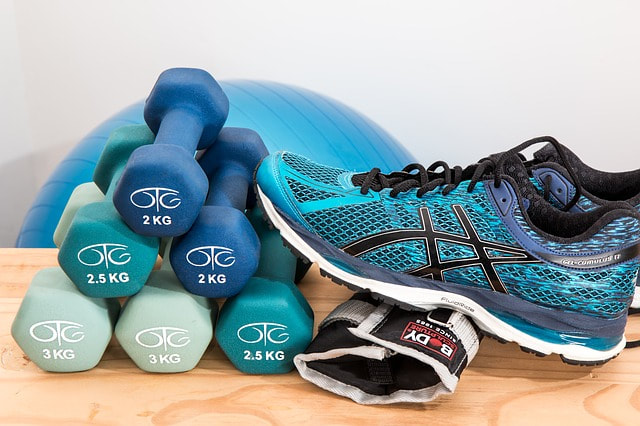The health of your eyes and vision often depend on the choices you make in your day-to-day activities. Why not start 2019 out right with a New Year’s resolution for healthy eyes? Below are some great ways to improve your eye health the whole year through. 1. Schedule Regular Eye ExamsScheduling a regular routine eye exam is one of the best things you can do for healthy vision. Certain eye diseases, such as glaucoma, do not present with any symptoms until the disease has progressed. Having regular comprehensive eye exams can allow your eye doctor to detect problems early, which may possibly slow the progression of eye disease and persevere your vision. The frequency of your eye exams often depends on your age, risk factors, and general health. If you are unsure of how often you should be having a regular eye exam or you are not sure if you’re do for one, please call our office to schedule your appointment. 2. Don't Ignore Vision IssuesMany of us are guilty of procrastinating at least occasionally, but don’t ignore or put off dealing with vision issues. For example, temporary blurry vision or floaters may not seem like a big deal, but they can also be signs of a serious eye problem that’s developing unbeknownst to you. Whether you think you may need your eyeglass on contact lens prescription updated or you have a growth on your eyelid, it’s important not to ignore potential eye issues or delay care for your eyes. When it comes to your eye health and vision, it’s always best err on the side of caution and have your eyes checked by an eye doctor. 3. Give Your Eyes A BreakIn today’s world, it’s almost impossible to avoid using electronic devices, but all that time spent on your cell phone, laptop, and tablet can take its toll on your eyes. Eyestrain, also sometimes called computer eye syndrome, can lead to dry eyes, blurry vision, and headaches. Since most of us don’t plan to give up our electric devices anytime soon, be sure to give your eyes a break. Practice the 20-20-20 rule. Rest your eyes by looking at something 20 feet away for 20 seconds every 20 minutes. Better yet, evaluate how much time you spend on your electric devices and determine if you can cut your screen time back a little. 4. Get Physically ActiveDid you know that regular exercise helps to keep your eyes healthy? According to the Cleveland Clinic, studies have indicated that exercise may lower your risk of developing certain eye diseases. Plus, exercise decreases your risk of high blood pressure, heart disease, and diabetes, which are associated with certain eye conditions. Aim to get at least 30 minutes of cardiovascular exercise five days a week. Many people take up exercise programs as part of their New Year’s resolutions. If you are just getting back into exercise after being sedentary for a while or you are starting a new form of exercise, it may be advisable to speak with your primary care doctor before getting started. Your physician can help you identify an exercise regimen that is safe, fun, and appropriate for you. 5. Protect Your EyesProtecting your eyes is easy to do. Wear the right protective eyewear for the activity you are doing. Sports, such as ice hockey, baseball, and racquetball, are activities with the highest incidences of eye injuries. The American Academy of Ophthalmology (AAO) estimates that wearing the right protective eyewear could prevent about 90 percent of sports-related eye injuries. Eye injuries on the job and at home are also common. People that work around or with chemicals, tools, machinery, and / or flying debris are at the highest risk. Make it a resolution to always protect your eyes by wearing appropriate safety goggles. We can all protect our eyes from the damaging UV rays from the sun by wearing sunglasses that provide 100 percent UVB and UVA protection. The sun’s rays reflect off of surfaces, such as water, snow, and pavement. So, remember to wear your shades year-round. The sun can harm your eyes in the winter just as easily as in the summer. 6. Kick The HabitIt’s no secret that smoking cigarettes is bad for overall health. It can increase risk of heart disease, cancer, and chronic obstructive pulmonary disease. Smoking is also bad for eyes.
According to the American Academy of Ophthalmology, smoking increases risk of developing certain eye conditions, such as age-related macular degeneration and cataracts. It can also make certain eye problems, such as dry eye, worse. If you smoke, talk to your doctor about options to help you quit. The American Lung Association and the American Cancer Society also have resources to help smokers kick the habit. The resolutions above are great ways to take care of your eyes and protect your vision, but that’s not all. These suggestions are also good for your overall health, not just your eyes. Remember, vision and health issues can interfere with work, independence, and quality of life. We hope our post helped inspire a few ideas for New Year’s resolutions for healthy eyes and healthy living. If you have any questions or would like to schedule an appointment with one of our eye doctors, please call our office at 508-746-8600. Comments are closed.
|
EYE HEALTH BLOGCategories
All
Archives
July 2024
|
|
Kadrmas Eye Care New England
55 Commerce Way, Plymouth, MA 02360
14 Tobey Road, Wareham, MA 02571 133 Falmouth Road (Rt 28), Mashpee, MA 02649 |
Phone Number:
1-508-746-8600 Hours: Monday through Friday — 8 AM – 4:30 PM |


 RSS Feed
RSS Feed
